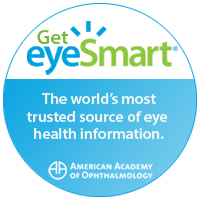Artificial intraocular lenses, also know as IOLs, replace the eye’s natural lens that is removed during cataract surgery. IOLs have been around since the mid-1960s, though the first FDA approval for one occurred in 1981. Before that, if you had cataracts removed, you had to wear very thick eyeglasses or special contact lenses in order to see afterward, since the natural lens that had been removed was not replaced with an artificial one.
Good vision after cataract surgery was another important consideration. But now that new IOLs have been introduced that solve more vision problems than ever, cataract surgeons have more to consider before choosing IOLs for their patients’ visual needs. Cataract patients are becoming more involved in the choice as well.
IOL Options
Premium IOLs: Multifocal & Accommodating
Traditional IOLs are monofocal, meaning they offer vision at one distance only (far, intermediate or near). They definitely are an improvement over the cataractous lens that is replaced during surgery, which provides only cloudy, blurred vision at any distance. But traditional IOLs mean that you must wear eyeglasses or contact lenses in order to read, use a computer or view objects at arm’s length. The new multifocal and accommodating IOLs such as Crystalens offer the possibility of seeing well at more than one distance, without glasses or contacts. Examples of multifocal IOLs are different versions of Alcon’s AcrySof IQ ReSTOR. Presbyopia-correcting IOLs are considered “premium” lenses, which means that you pay any associated extra cataract surgery costs yourself. Medicare and most health care plans will not cover these extra costs, because the additional benefits of these IOLs are considered a luxury and not a medical necessity.
Toric IOLs for Astigmatism
Toric IOLs designed to correct astigmatism also are considered “premium” lenses, and — like multifocal and accommodating IOL’s require extra testing and have an out of pocket expense for the patient. The FDA approved the AcrySof IQ Toric IOL (Alcon) in September 2005. Different models of this toric IOL can correct 1.00 to 6.00 diopters of astigmatism. This lens also is available in aspheric versions for crisper vision. Different models also can filter potentially damaging UV or blue light.
Blended Vision With Intraocular Lenses
If your cataract surgery involves both eyes, you might consider blended vision. This involves implanting an IOL in one eye that provides near vision and an IOL in the other eye that provides distance vision. Blended vision reduces your dependence on glasses. It is an excellent alternative to multifocal IOL’s and the Crystalens. It requires extra testing and has an out of pocket expense. People who do best with this method already are accustomed to monovision with contact lenses, which is a common way of correcting presbyopia.
TECNIS®  IOL
IOL
The latest addition to the TECNIS® Family of IOLs offers new optical technology for providing an Extended Range of Vision.
Traditional IOL solutions for treating presbyopia include Multifocals and Trifocals, which work on the principle of simultaneous vision by splitting light into multiple distinct foci, and Accommodative IOLs, which change in shape and power when the ciliary muscle contracts.
Typically with these technologies, the correction of presbyopia is thought of in terms of the distinct distance for which functional vision is provided.
The Symfony IOL is available in both a Non-Toric version and a Toric version for patients with astigmatism.
At Lauderdale Eye Specialists, our highly trained physicians will help you in the decision making process. Together, we will decide which lens best suits your particular vision needs and your lifestyle. Please call us for an appointment.
Lauderdale Eye Specialists provides this on-line information for educational purposes only and it should not be construed as personal medical advice. Lauderdale Eye Specialists disclaims any & all liability for injury or other damages that could result from use of the information obtained from this site.


